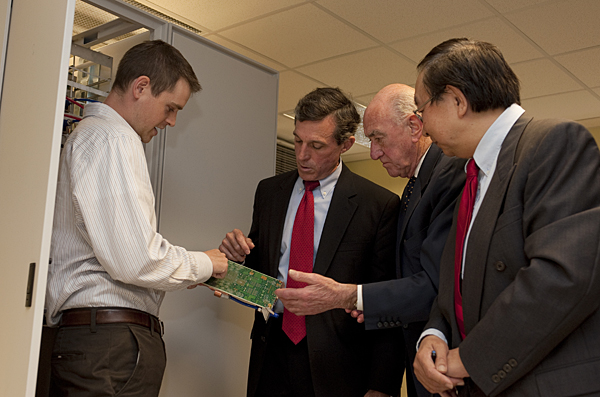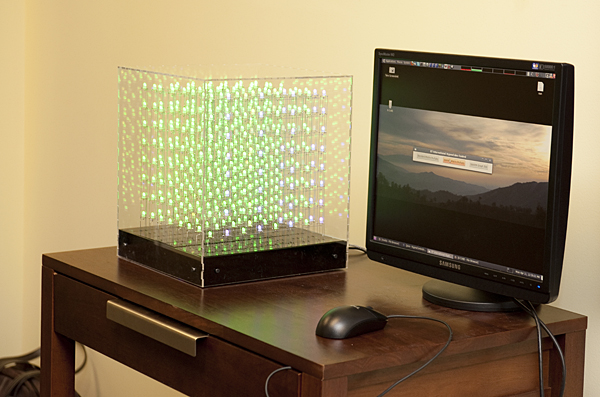


Powerful partnerships
Congressman Carney tours UD spin-off focused on supercomputing
11:01 a.m., May 6, 2011--“Congressman, you have a heavy workload,” Rishi Khan of ET International (ETI) said to Congressman John Carney. “Imagine having five people to pass your work off to when you become overwhelmed without having to explain what to do, when to do it, how to coordinate or where to go to get required information. Then those five have five people to support them in the same way.
“Now repeat that 1,000 times,” explained Khan. “That's what we do at ET International—that’s supercomputing.”
Research Stories
Chronic wounds
Prof. Heck's legacy
Carney visited the Newark-based ETI in April to see first-hand the technology being developed for supercomputing, in particular parallel computing systems.
Khan showed Carney a computer connected to a glass box with hundreds of beads running in columns inside. As the box lit up strand by strand, the beads changed color rapidly.
Khan explained that the lights represent computational states of the computer core.
“The changing lights are a visual representation of how ETI more quickly and fully utilizes the power of each core to solve problems,” said Khan, vice president of research and development.
Since its founding in 2000 by Guang Gao, UD Distinguished Professor of Electrical and Computer Engineering, ETI has been building software for multiple platforms -- from mobile devices to desktop computers to data centers -- focusing on solving problems with parallelization, synchronization and data movement so programmers can concentrate on the issues they are trying to work out.
“From the most advanced supercomputers to handheld devices like cell phones, the world is moving toward many-core computing systems,” said Rich Collier, chief operating officer of ETI. “The more sophisticated our needs become, the more processing power required, and new computer architectures are emerging to deliver this power at the national scale.”
Khan and Collier explained to Carney that the technology and software systems developed at ETI are what enable innovations needed by application developers to advance the computers of tomorrow in areas as diverse as national security, geological research and economic modeling.
“Science and technology-based companies are critical to future job creation and economic growth in America,” said Carney. “I am incredibly impressed with the work ETI is doing and think they are headed for huge success.”
More than a decade ago, UD’s David Weir recognized ETI’s potential and has supported Gao with everything from business development to patent procurement over the company’s lifespan. Both of these services, among numerous others, are now offered by the Office of Economic Innovation and Partnerships (OEIP), although Weir’s enthusiastic support of ETI predates the office by several years.
“The partnership between UD and ETI is the poster child of what can happen with collaboration between UD and its faculty, researchers and entrepreneurs,” said Weir, now director of OEIP. “ETI benefits UD by providing employment opportunities for graduates and hands-on experience through internships for students. Being born and bred in Delaware, the state also profits by having a company that is a leader in the field of supercomputing.”
ETI remains at the forefront of extreme-scale supercomputing, winning government contracts for building such complex systems. Likewise, ETI continues to strengthen ties with UD, employing more than 35 people, with more than half a dozen UD alumni -- including Khan. A dozen students from the University have also interned with ETI over the years.
The powerful ties linking the University and ETI were evident to Carney. “The partnership between ETI, the University of Delaware and the federal government is a great example of how government can help create an environment where small businesses and entrepreneurs succeed and grow,” he said.
Article by Meredith Chapman
Photos by Kathy F. Atkinson









